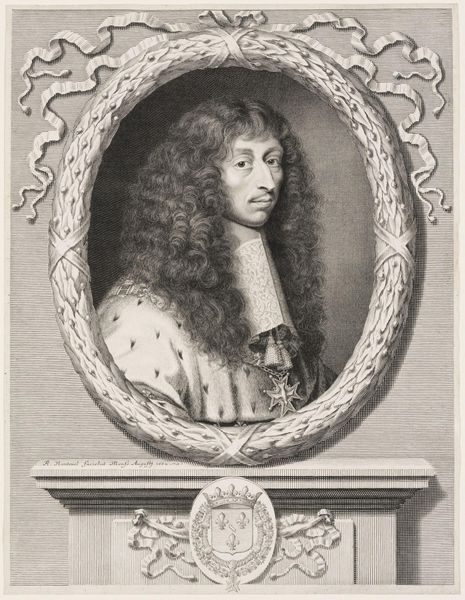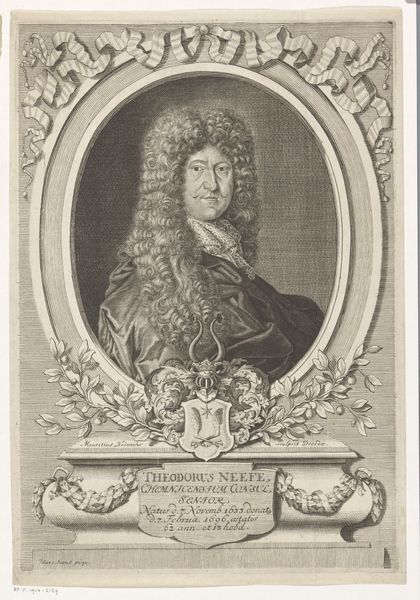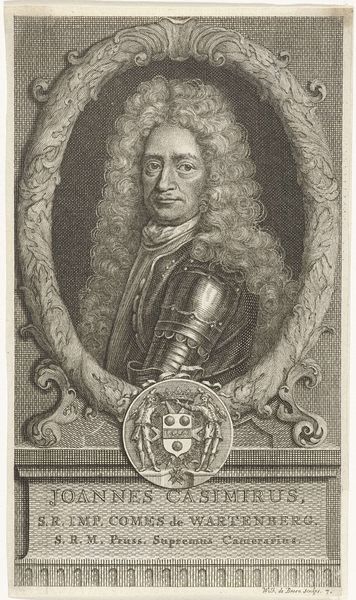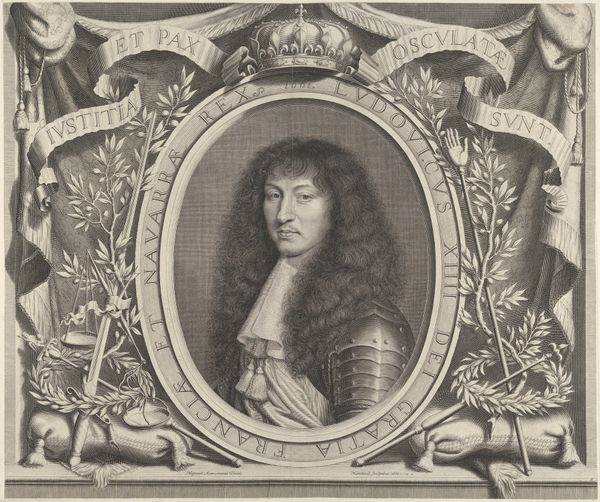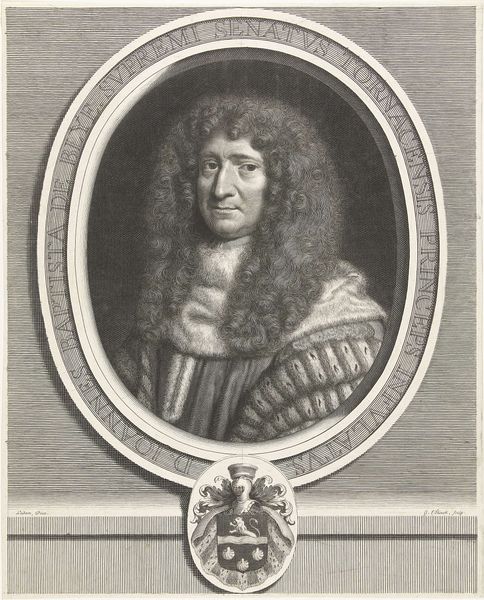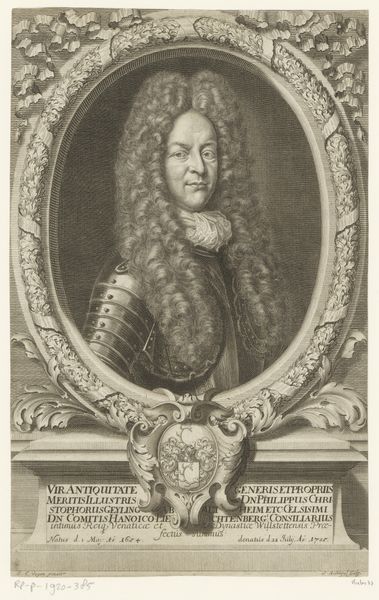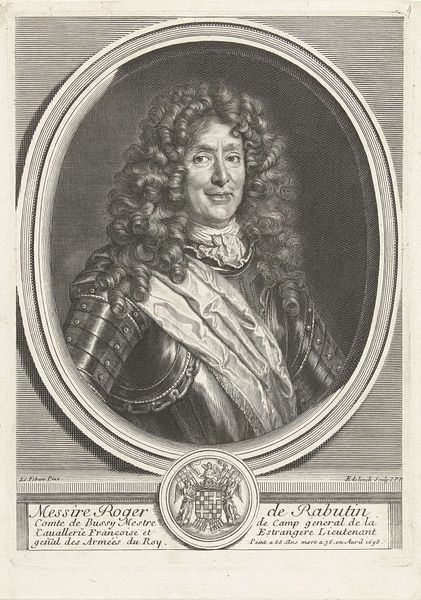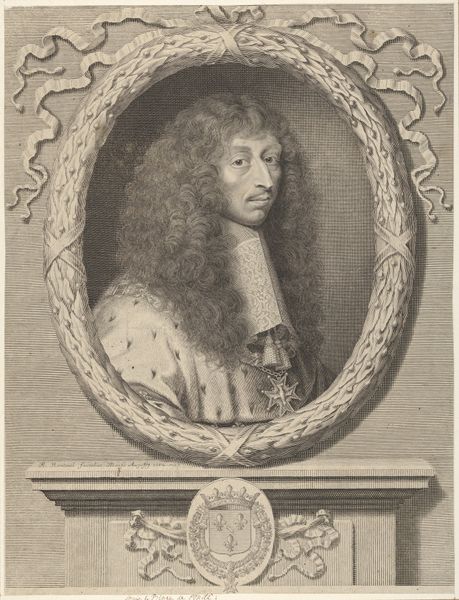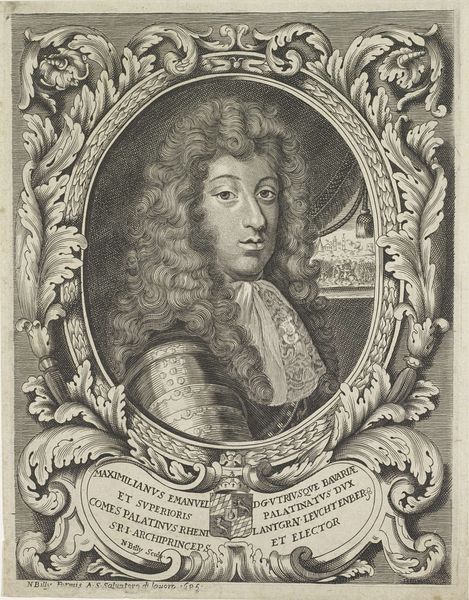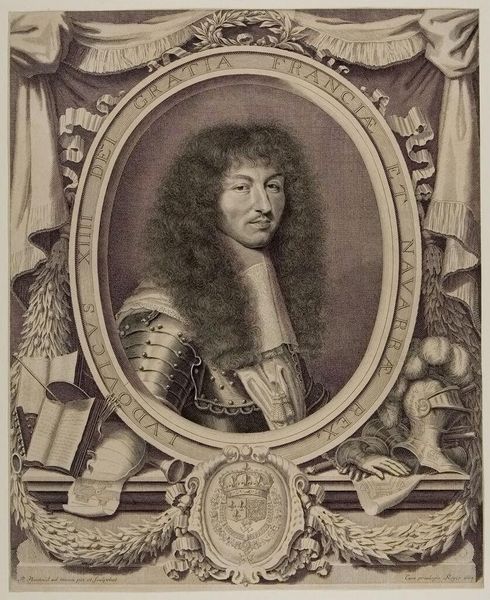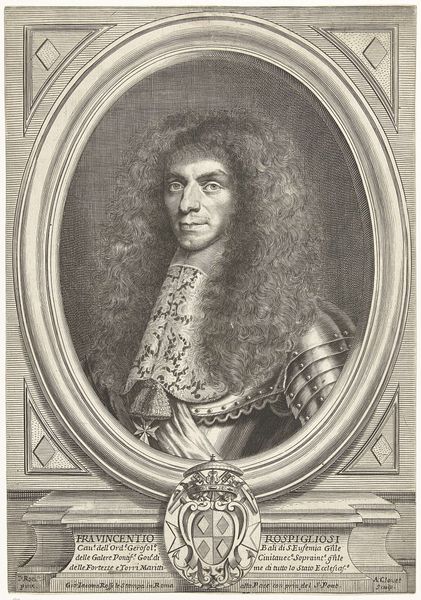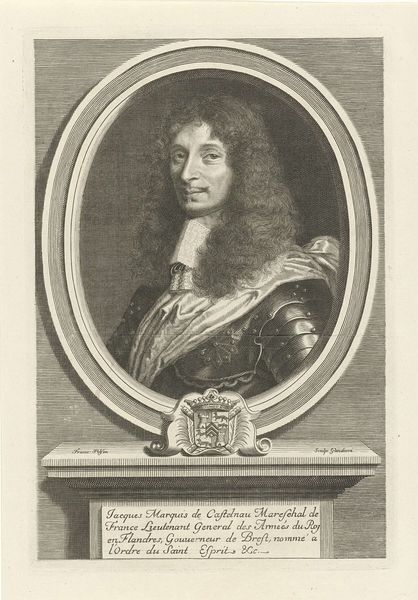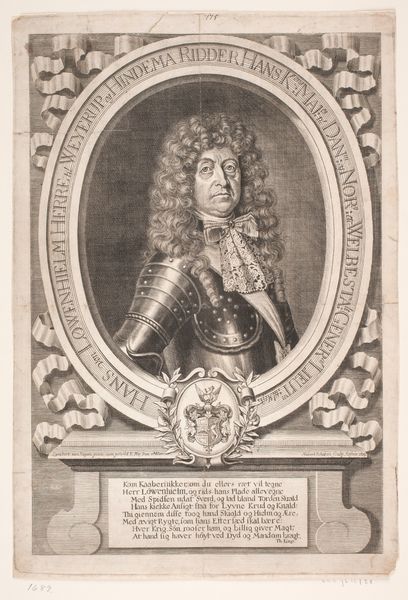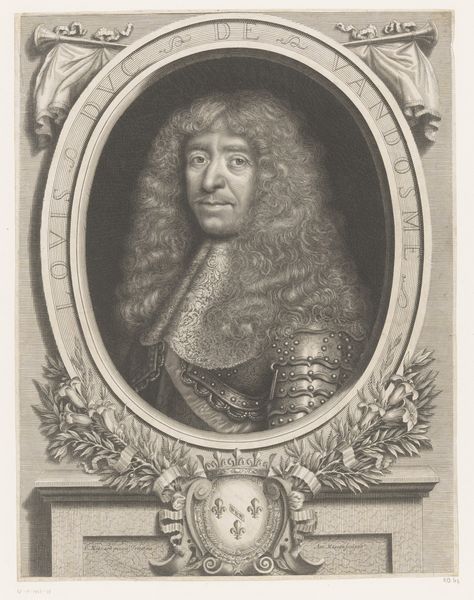
Portret van Bernard de Foix de la Valette, hertog van Epernon 1661 - 1667
0:00
0:00
pietervanschuppen
Rijksmuseum
print, engraving
#
portrait
#
baroque
# print
#
old engraving style
#
engraving
Dimensions: height 358 mm, width 277 mm
Copyright: Rijks Museum: Open Domain
Curator: Looking at this intricate print from between 1661 and 1667, made by Pieter van Schuppen, we see a portrait of Bernard de Foix de la Valette, the Duke of Epernon. Editor: The density of detail is pretty striking. It's like a lace doily made of power. You can almost feel the weight of that armor. Curator: Indeed. Van Schuppen masterfully captures the sitter’s status and importance. The print’s creation was a direct result of his prominent role in the French court. It shows not just the individual, but also the societal values around nobility and authority in 17th-century France. Editor: I'm curious about the printmaking process itself. Look at the way light is achieved with those etched lines, it makes the clothing and background material pop from the paper. Did he have assistants? How long did it take? So much labor went into propagating this image! Curator: Considering his subject matter, it's very likely that a team collaborated on its production; the process certainly would have required both time and skilled engravers. These prints functioned almost as a kind of early political advertisement. Displaying wealth, rank, and lineage was essential. Editor: Exactly. It’s a piece of propaganda as much as it's art. Notice that armor is very visible – that links back to the military labor provided by individuals such as the Duke in service of the monarchy. Curator: His family's coat of arms below, prominently flanked with weapons and regal ornamentation, also emphasizes his inherited power and social standing, something vital for maintaining control and solidifying alliances in the highly stratified society. Editor: To consider this piece then, is to consider its making, display, distribution, reception, and impact on the material lives of a wide range of actors – not only those in the elite, but the working classes as well. Curator: A very pertinent reminder of the layered meanings embedded within seemingly simple portraits. Thank you. Editor: My pleasure. It’s easy to be pulled in by the image alone, forgetting it was always intended as part of larger socioeconomic machine.
Comments
No comments
Be the first to comment and join the conversation on the ultimate creative platform.
